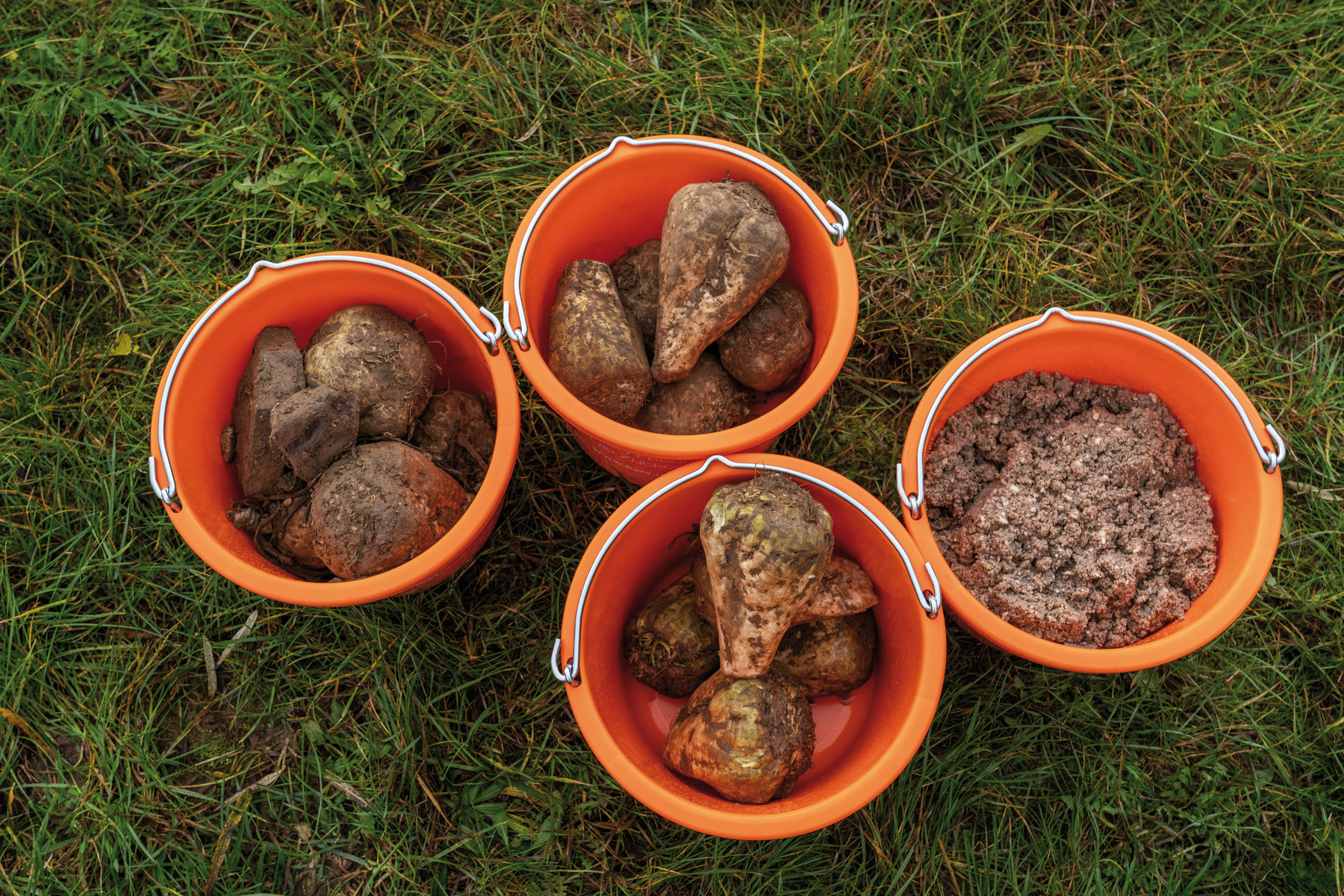Feedbeet Handling
The use of beets in barn feeding requires not only storage, but also proper handling. Handling may include cleaning, chopping of beets and mixing with other feeds. Cleaning can be done either dry or wet. There mobile and stationary chopping machines available which suits different capacity needs. Finally, the beets will most likely be mixed with other feeds. Processing can be done as part of fresh feeding or in preparation for beet ensiling.
Cleaning
The need to clean the beets depends on the type of soil and the presence of stones. Larger amounts of sand and stones should be eliminated, as it provides no nutritional value and could harm animals and machinery. Low amounts of clay and loan can pass the gastrointestinal tract of healthy animals.
After the beets have been brought to the farm, it may be necessary to initiate a further cleaning process based on weather and/or soil conditions. Carefully cleaned beets may contain less than 5% soil and are thus below usual values for grass and corn.
Dry cleaning is the most common way of soil and stone removal and is already intergrated in the harvesting process.
Wet cleaning with water circuit is a very efficient way and reduces soil tare down to 2% and captures nearly 100% of the stones. But this process is rather costly.
Good to know about Cleaning
Dry cleaning is the most common way of cleaning and destoning beets. It is not
nearly as expensive or labor intensive as wet cleaning. When done well, dry cleaning
is efficient and "safe enough" to prepare beets for the feed table or for ensiling. Cleaning can be done before storage (be careful not to damage the beets) or after storage.
The most efficient way of cleaning beet is done through wet cleaning. Wet cleaning
is also the most expensive way of cleaning beet. In the past, KWS has been involved in developing a beet washer that was primarily oriented to the high number of biogas plants in Germany. Other brands have already been on the market for decades. The available machines generally operate with a water circuit and, together with efficient destoning, can clean the beets down to less than two percent dirt.
The need to clean beets depends on the type of soil and the presence of stones.
It is a common belief that soil in the feed is a major health risk to the animals. Larger amounts of sand and stones are obviously not good for the feed table. Clay and loam, on the other hand, usually pass through the gastrointestinal tract without causing illness in the animals.
Chopping Beet
Beets that are fed to animals in barns must be chopped. First, chopped beets are easier for animals to eat. Second, chopped beets (when chopped relatively small) provide a uniform feeding and prevent selection by animals during feeding. The size of chopped beets should at least not be larger than 3-4 cm.
Good to know about Chopping Beet
Discover more
Your contact partner



.png)








.png)
